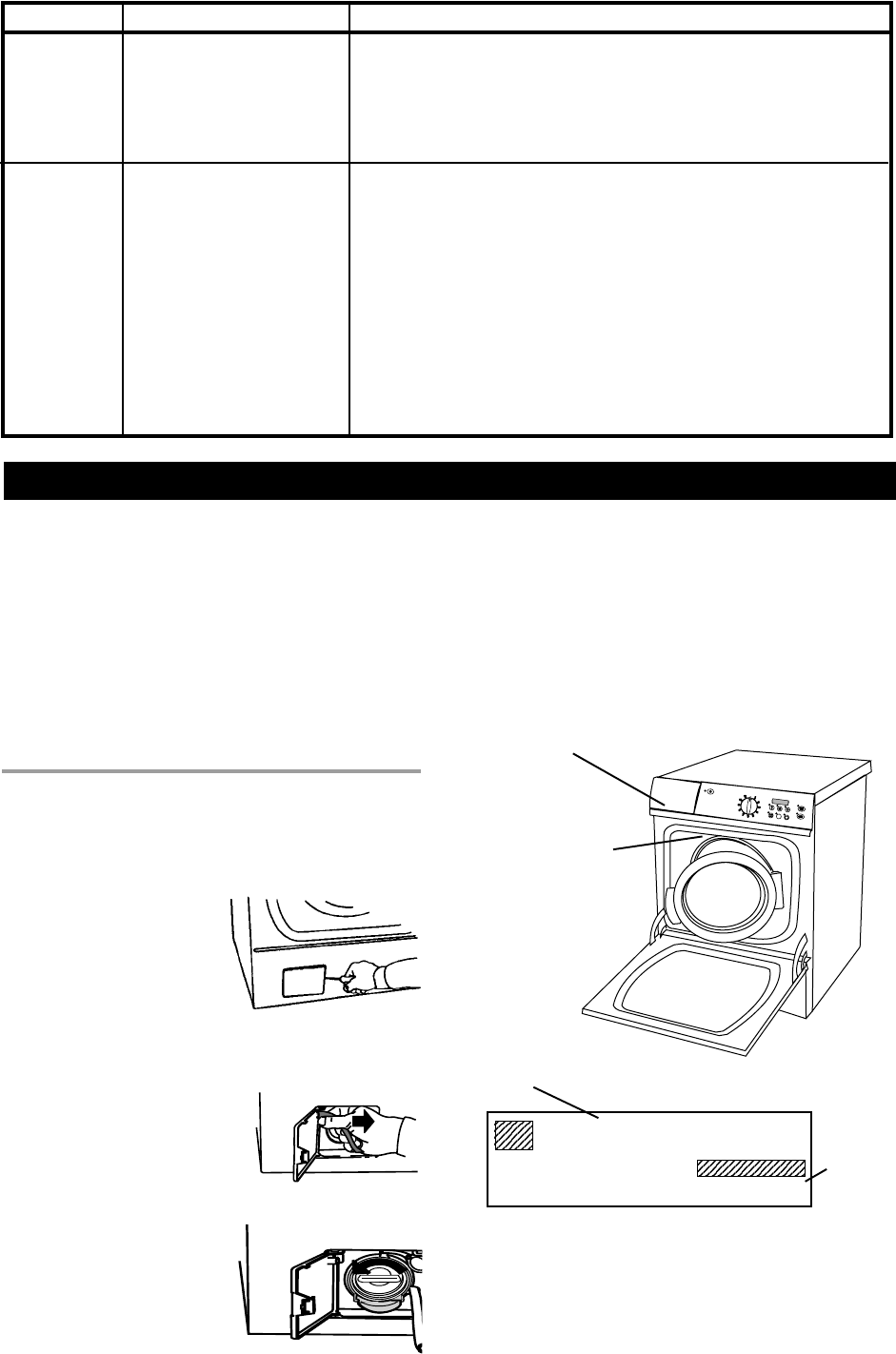
Page 23
E
2
2h
COMMON LAUNDRY PROBLEMS (CONTINUED)
Problem Possible Cause Suggested Solution
TROUBLESHOOTING
If you should experience a problem with your washer,
you should review the following list of frequently
encountered situations or go to our website at
www.askousa.com. It could save you the cost and
inconvenience of a service call.
Even though the product is under warranty, if the problem
is not caused by defective workmanship or materials,
you will be charged for a service call. Refer to page 25
to determine what is and is not covered under your
warranty. If you’re still not sure, contact the AM Advisory
Center before you call a service technician.
EMERGENCY DRAIN HOSE
Should you ever need to drain the water from the unit in
the event of a power outage, use the drain hose next to
the pin trap, as illustrated below.
1. Using the flat edge of the
liquid detergent partition
piece, a flat-head
screwdriver or similar
item, gently pry open the
drain pump cover, as
illustrated.
2. Before you proceed, place a shallow container on
the floor near the drain to catch the water.
3. Pull the small black drain
hose loose from its position
on the door cover and let
the water drain into the
container.
4. When the machine is
empty, reconnect the
hose securely to its
position on the door
before you close the drain
pump cover.
BEFORE YOU CALL
Before calling for service or contacting ASKO regarding
a warranty issue, make a note of the model name, type
number and serial number. The model is on the front of
the detergent drawer. The type plate with the type name
and serial numbers is located above the glass door. (See
illustration below.)
Type plate
(see below)
Model Name
(e.g., W6021)
Type: WMxx
000000000000
xx x xxxxxxxxMxxxxxxxW
Type Name
12-digit
Serial
Number
Empty all pockets and turn inside out before laundering.
Fasten all hooks, snaps, and zippers before laundering to avoid snags.
Remove sharp buckles. Turn knits inside out.
Before washing, rinse harsh chemicals (such as battery acid, hair care
chemicals, cleaning solutions, etc.) from towels and other articles to
avoid holes in fabrics. Do not allow these unrinsed items to contact
other fabrics.
Mend all garments before laundering to prevent enlarging of rips.
These items may fray at edges from normal wear, not the washer.
Wash only in half loads and don’t wash in the same load with heavy
items, such as towels or jeans.
Rips, snags,
excess wear
Sharp objects in pockets
Hooks, snaps, zippers,
buckles
Harsh chemicals
Existing rips and tears
Permanent press items
Dark clothes, especially cottons, can bleed excess dyes into wash
water. White or light-colored clothes can absorb the dye and discolor.
Separate light items from dark items.
Always empty all pockets before washing.
Cool or cold water is best for retaining dark or bright colors.
Fading and
discoloring
Improper sorting
Crayons or pens in pockets
Water too hot


















